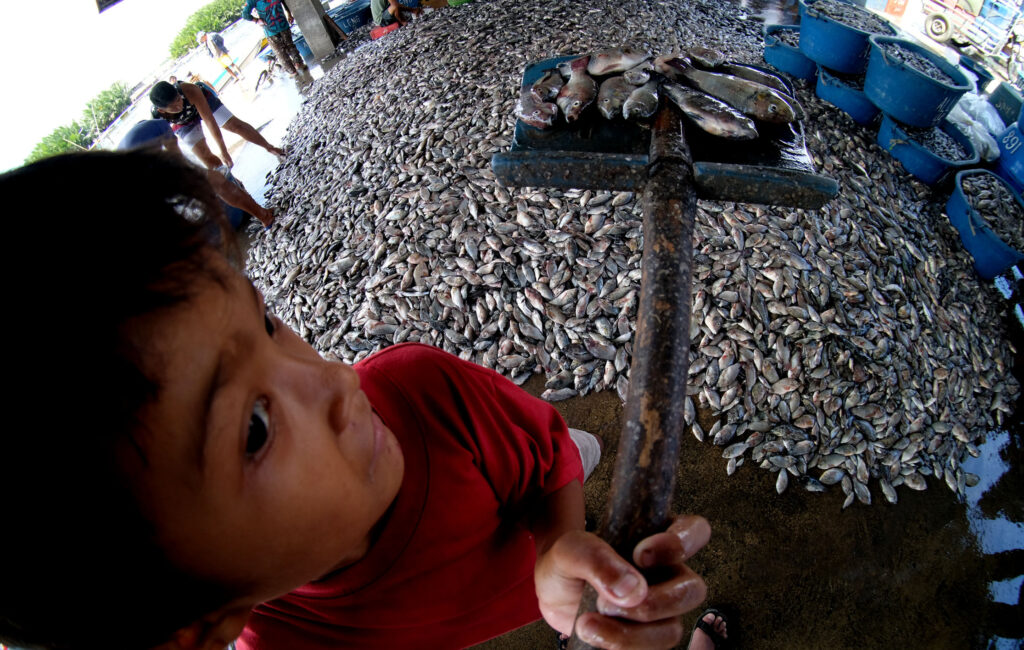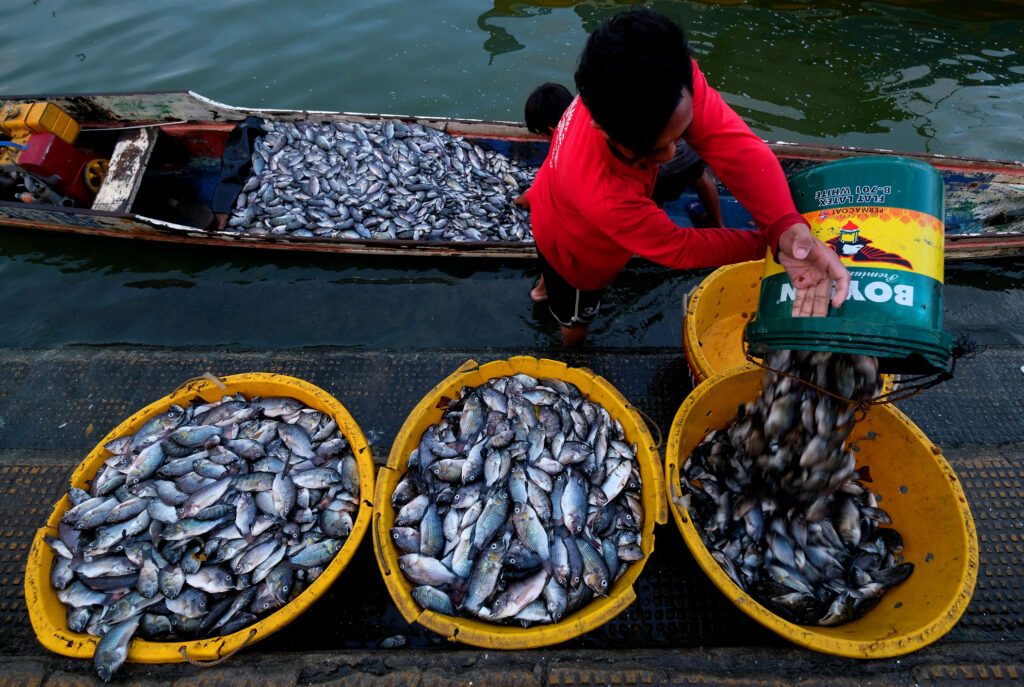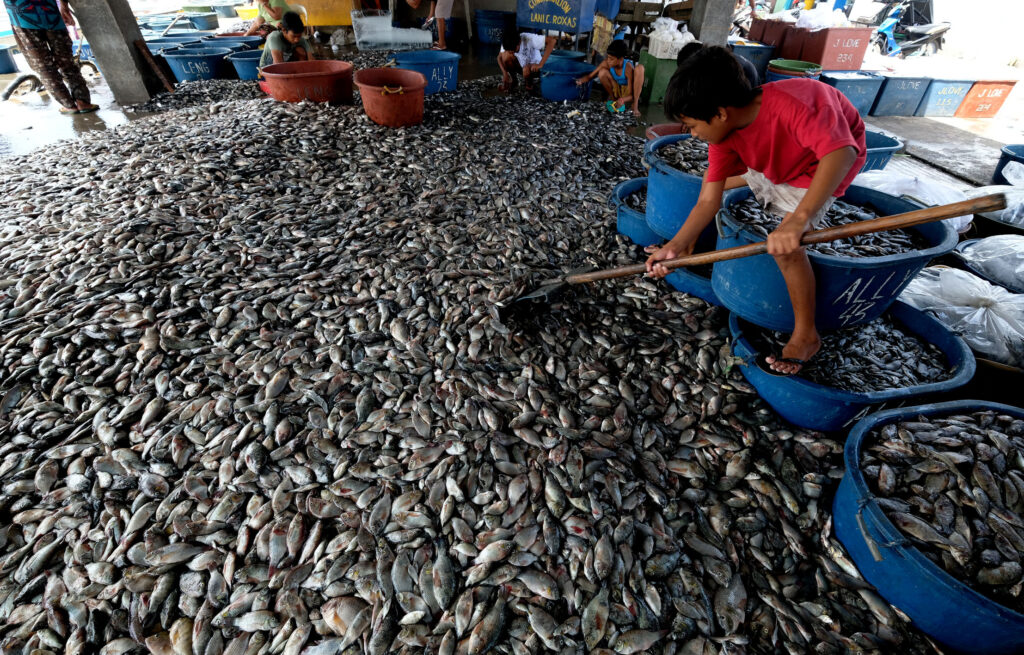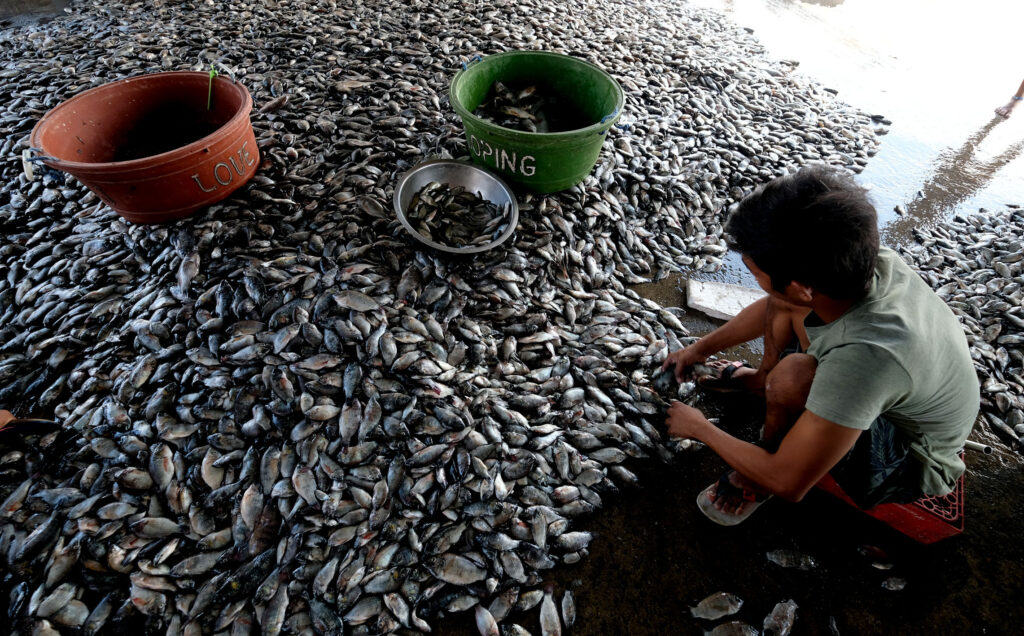Text by Henrylito D. Tacio
Photos by Rhoy Cobilla
Farmed tilapia production in the Philippines is declining, says a fishery expert who made tilapia the country’s second most popular fish after bangus.
Although there was a 240% increase in tilapia production from 2001 to 2011, there was only a 7% increase from 2007 to 2016, according to the Bureau of Fisheries and Aquatic Resources (BFAR).
In the BFAR’s Road Map for the Tilapia Industry (2014-2016), a 3% increase in production per year was projected. But statistics from the Philippine Statistics Authority showed that there was a 0% increase in the production of the same period.
Dr. Rafael D. Guerrero III, former director of the Philippine Council for Aquatic and Marine Research and Development, cited those figures in the paper that was published in the Philippine Journal of Science.
“What is happening to our farmed tilapia industry?” wondered Dr. Guerrero, who is now an academician with the National Academy of Science and Technology (NAST).
To find what went wrong, Dr. Guerrero conducted a survey among 55 tilapia farmers (who raised tilapia in ponds, cages, and/or pens) and hatchery operators from Luzon (69%) and Mindanao (31%).
“Of the 55 respondents, 38 (72%) said that their tilapia production decreased by 52.4% on the average in the last five years,” Dr. Guerrero reported of the result of the study, which was supported by the Department of Science and Technology (DOST).
Socioeconomic, technological, institutional, and climatic factors that could cause the decline in farmed tilapia production were presented in a structured questionnaire.
According to Dr. Guerrero, the major factors identified by the farmers were high water temperature (68%), lack of government assistance (58%), poor breed of tilapia (48%), high cost of production (46%), and lack of capital (44%).
To address these problems/constraints, the following measures/actions were recommended by the study:

A boy classifying the huge fishes from the smaller ones to be used as feeds.in Panasahan Fish Port in Bulacan. Bulacan is one of the Tilapia Capital in Central Luzon when it comes for fresh fish and other delectable seafoods…photo by RHOY COBILLA 
fishermen unload their Tilapia that they just harvested on their traditional banca to sell to the market in Panasahan Fish Port in Bulacan. Bulacan is one of the Tilapia Capital in Central Luzon when it comes for fresh fish and other delectable seafoods…photo by RHOY COBILLA
High water temperature: The shading of ponds with silver straw nets and aquatic plants can help reduce sunlight penetration and lower water temperature, especially during the “hot months” (March to April).
Dr. Guerrero reported that using the next with 40% shading, the fry production of Nile tilapia in freshwater breeding ponds increased by 77% compared to that in the non-shaded pond. On the other hand, the growth of black-chin tilapia was better compared to that of the control in the freshwater pond, with 24% shading provided by the floating water lettuce.
Lack of government assistance: Extension and technical services are direly needed by tilapia farmers. The extension workers of local government units (tasked by law to deliver such services) should be well-trained and adequately supported.
Poor breed of tilapia: There is a lack of government-accredited tilapia hatcheries in the country for the production of “quality fry and fingerlings” for dissemination to farmers. More tilapia hatcheries should be put up, especially in Mindanao, with government support.
High cost of production: The cost of commercial feeds used for intensive culture of tilapia in ponds and cages constitutes 60%-80% of the total cost of production. The substitution of imported feed ingredients like soybean meal with locally available copra meal can reduce the cost of feeding.
Lack of capital: Soft or interest-free loans should be provided to tilapia farmers, particularly for expansion in areas with high growth potential production in brackishwater ponds, mariculture parks, and freshwater ponds in Mindanao and establishment of accredited hatcheries.
Most of the farmed tilapia in Mindanao are concentrated in Maguindanao, Sultan Kudarat, Davao del Sur, and South Cotabato. Mindanao contributed about 6% of the total farmed tilapia production with most of the produced coming from Luzon (92%). Visayas contributed a measly 2%.
“With the abundant freshwater resources in Mindanao and the high demand for tilapia, further growth of the industry is seen in the tapped lakes and irrigated areas in the country’s second largest island which has a growing population,” Dr. Guerrero said.
Of the 23 major lakes in the Philippines, 19 are found in Mindanao. The major lakes with tilapia culture are found in Lake Sebu (South Cotabato) and Lake Buluan (Maguindanao and Sultan Kudarat).
Tilapia is not native to the Philippines. In the 1950s, Deogracias Villadolid, of the then Bureau of Fisheries (now known as BFAR), brought some breeding stocks of tilapia from Thailand into the country. Calling it a “miracle fish,” the bureau wanted it to be raised in backyard ponds nationwide.
Unfortunately, it never materialized. Tilapia’s high reproduction rate, which was a good trait, resulted in overcrowded ponds and stunted fish. As a result, many Filipinos became disappointed over its performance.
The cause of overcrowding was simple. Pond-reared tilapia, with a natural ratio of 50% male and 50% female, mature in 60 days. They breed frequently, often every 30 days. “Female tilapias may spawn from 100 to thousands of eggs, depending on its size,” the Iloilo-based Southeast Asian Fisheries Development Center (SEAFDEC) reports.
At such a growth rate, there was more fish in the pond, and competition for food escalated. With reduced nutrition, the best attainable market size for tilapia at that time after four months was only 150 grams.

A boy classifying the huge fishes from the smaller ones to be used as feeds.in Panasahan Fish Port in Bulacan. Bulacan is one of the Tilapia Capital in Central Luzon when it comes for fresh fish and other delectable seafoods…photo by RHOY COBILLA 
A boy classifying the huge fishes from the smaller ones to be used as feeds.in Panasahan Fish Port in Bulacan. Bulacan is one of the Tilapia Capital in Central Luzon when it comes for fresh fish and other delectable seafoods…photo by RHOY COBILLA
“Tilapias are very prolific,” Dr. Guerrero said. Generally, tilapias spawn in shallow portions of lakes, rivers, or ponds. Inbreeding, the male builds nests on the bottom to attract females. The nests are round and shallow, about 20-25 centimeters wide.
“The male waits for the female partner in the nests,” SEAFDEC reveals. “After a brief courtship (to last a few hours), eggs are spawned by the female and fertilized by milt from the male. The female then gathers the fertilized eggs in its mouth to incubate them. The egg hatch after three days. Spawning can occur as often as twice a month during the year if conditions warrant.”
Studies have shown that the male tilapia grows faster and bigger than the female tilapia. The logical choice was to grow all-male tilapias. But could male tilapias be selected and separated from females? Was it physically possible to select the fish for stocking in the ponds? Yes, it could be done – through manual sexing.
In manual sexing, the male is distinguished from the female tilapia by looking at an organ called the urogenital papilla, which is found near the anus of the fish. There are two openings in the female fish and only one in the male fish.
“Manual sexing is cumbersome and time-consuming,” DOST said. “Sometimes, the openings are not easy to see. The technique is only 80% accurate because of human error. Another disadvantage is that you can only sex fish when they are 3 months old. By then, they are almost fully grown.”
Dr. Guerrero, who has devoted more than three decades of his life to laboratory and applied science, knew that there was a more practical, effective, and economical method of solving the problem. After almost two years of research, he was able to convert all tilapias in a pond to males.
For his laudable work, he is regarded as the “Father of Tilapia Sex Reversal.” In 2004, he was conferred the Mgr. Jan D. F. Heine Memorial Award by the International Tilapia Foundation for his study.
As a result of his work, tilapia has gained popularity among Filipinos who cooked the fish in different ways: either grilled or fried. Tilapia can also be made into a sinigang (a sour soup using tamarind, santol, guava, or calamansi as a base) and paksiw (similar to sinigang but uses only vinegar).
Tilapia has replaced galunggong (scad) as the poor man’s fish. Nutritionists claim that 100 grams of tilapia provide approximately 93 calories, with one gram of fat (0.5 grams saturated), 55 milligrams of cholesterol, 37 grams of sodium,0.5 milligrams of iron, 19.5 grams of protein, and 90 milligrams of omega-3 fatty acids.
Fish is the second staple food of Filipinos, after rice. On average, every Filipino consumes 98.6 grams of fish and fish products each day, a study of the Food and Nutrition Research Institute of the Department of Science and Technology showed.

